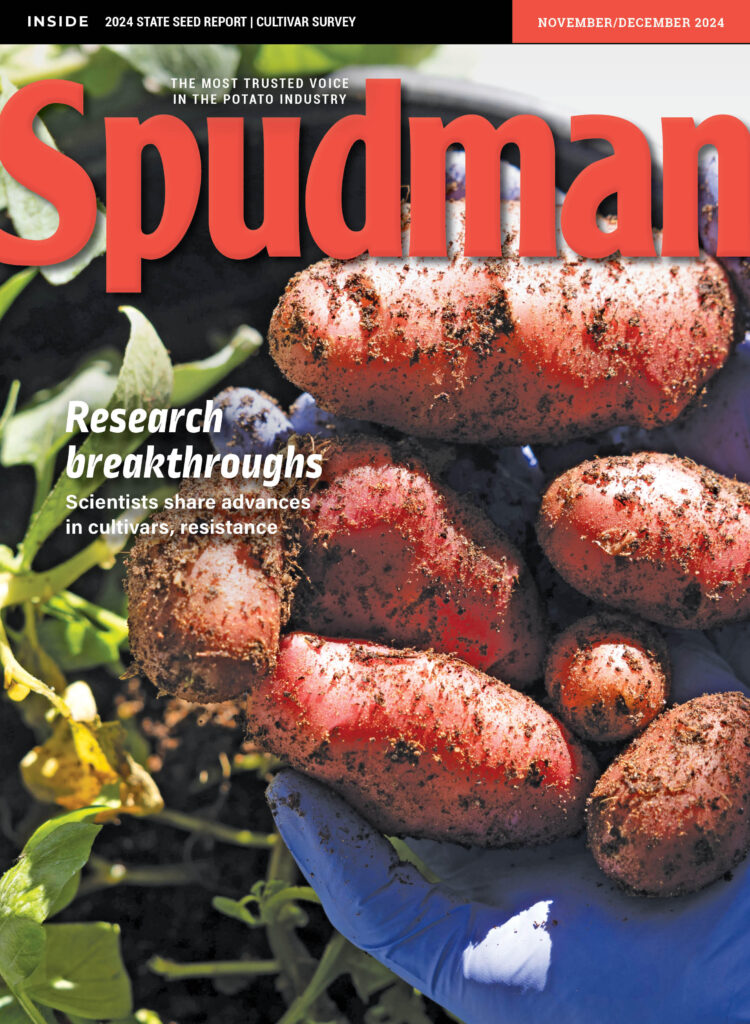Jul 3, 2024New automated tool aims to help farmers track water consumption
The Idaho Department of Water Resources (IDWR) and the University of Idaho (U of I) are testing a new automated tool that interprets satellite imagery to help farmers track daily crop water consumption.
The cloud-based tool, called OpenET, takes thermal imagery from NASA Landsat satellites and maps daily and cumulative evapotranspiration over the growing season, according to a news release. Users can zoom in and study variability within individual pivots.
IDWR has awarded U of I agricultural engineering professor Erin Brooks, in the university’s Department of Soil and Water Systems (SWS), about $800,000 over three years to test and calibrate OpenET. Meetpal Kukal, who will join SWS in August as a new professor specializing in hydrologic science and water management, and Jason Kelley, a former U of I professor in the same department, will serve as coinvestigators.

IDWR has been using METRIC, software developed by Richard Allen, a former U of I professor, and requiring trained staff to manually run imagery to produce evapotranspiration data. Allen also aided in the development of the beta version of OpenET before retiring in 2022.
Tracking evapotranspiration will inform growers of the amount of water their crops are using compared with the amount they’re applying to their fields through irrigation equipment, helping them improve efficiency.
“It helps growers in the sense that they can actually go in and see what happened, and they can actually evaluate their water-use efficiency — something they’ve never been able to do before on a field-by-field basis — and it helps IDWR know what has gone on and whether curtailments have made a difference,” Brooks said.
This fall, the U of I team will place soil moisture sensors and eddy covariance towers by three Magic Valley fields to record baseline evapotranspiration data. The towers take ground-based, site-specific meteorological readings. Researchers will also include data for this analysis from a pair of eddy covariance towers in use for a separate project on fields at the future site of U of I’s Idaho Center for Agriculture Food and the Environment (Idaho CAFE) in Jerome.
The team will compare the data with rates OpenET provides from the same sites to determine what, if any, adjustments are needed to improve the automated tool’s performance.
“Initial testing of OpenET by IDWR suggests there may be some errors introduced in the automated approach,” Brooks said. “They are interested in evaluating the accuracy of this new tool and potentially developing approaches to correct any errors that may be revealed by the project.”
Under Idaho law, water rights are tied to the amount of water farmers divert from rivers or withdraw from an aquifer by pumping. However, much of the water is not taken up by plant roots and seeps back into an aquifer or is left unused and returns to rivers in canals. As a result, farmers may divert less water without affecting actual consumption, thereby improving efficiency without affecting minimum flows required to provide sufficient hydroelectric power to the state.
“Accurate quantification of evapotranspiration from irrigated lands is critical to basin-scale water budgets and sustainable water management in Idaho,” Phil Blankenau, an IDWR evapotranspiration analyst, said.
Producers have relied upon AgriMet weather station data to help predict the amount of irrigated water that could be consumed by crops under optimal soil conditions, but the actual amount of consumed water could vary based on the irrigation that actually occurred, the actual soil type, the crop type and the fertility of the soil.
“If we don’t see a difference in evapotranspiration after a curtailment in an area, that means the growers are more efficient with how they use the water, and it ultimately doesn’t help maintain the minimum flows (of) the Snake River required by Idaho Power to meet state power demands,” Brooks said. “By becoming more efficient, it’s not solving any of our water problems in the end. That consumptive water use has to go down in order to have more water at the outlet.”







